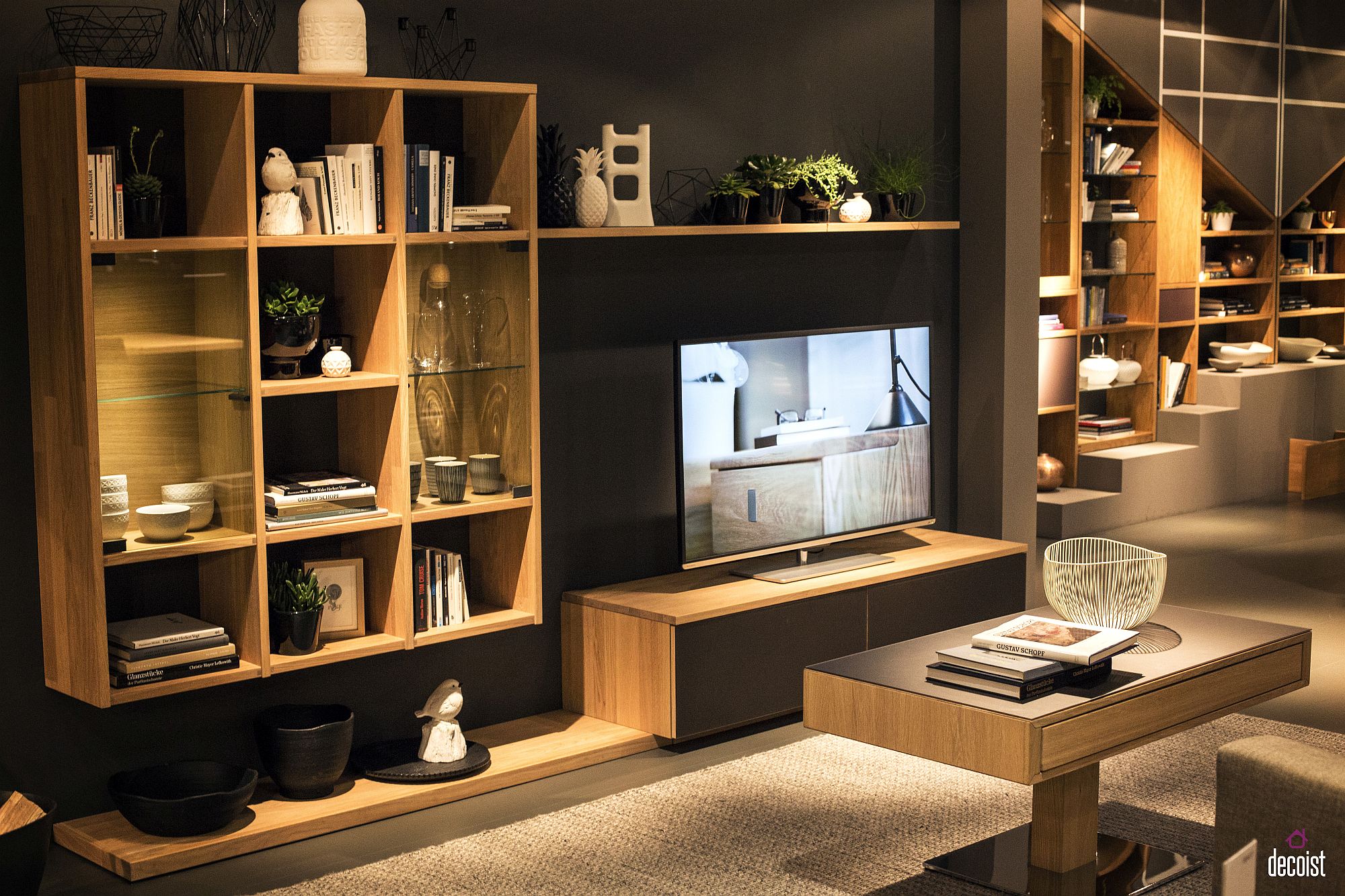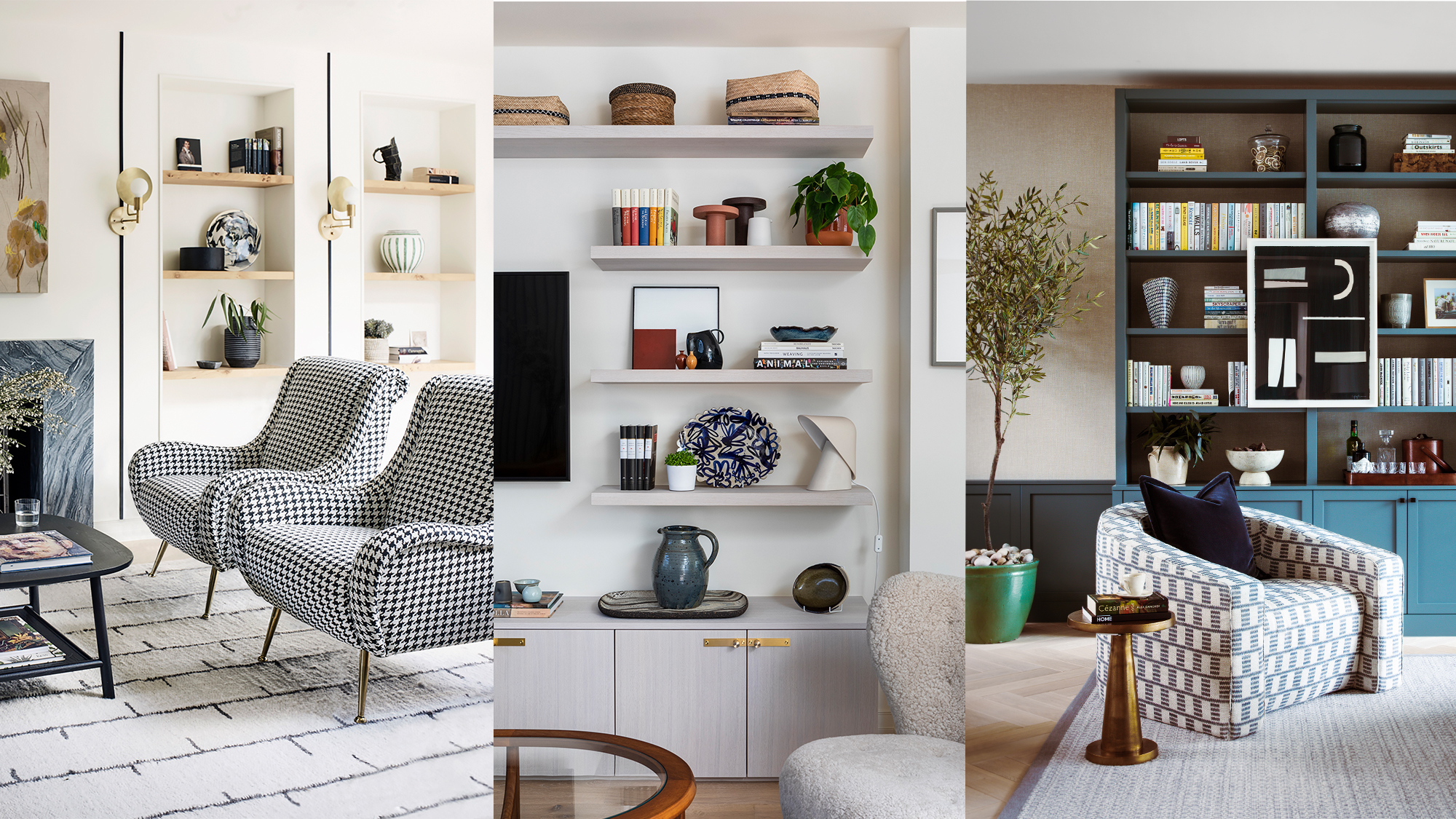Open Shelf Cabinet Styles for Living Rooms

Open shelving offers a dynamic and versatile approach to living room storage, seamlessly blending functionality with aesthetic appeal. The right open shelf cabinet can transform a space, showcasing cherished possessions while contributing to the overall design narrative. Choosing the perfect style depends heavily on the existing décor and the desired ambiance.
Open Shelf Cabinet Styles: A Comparative Overview
Five distinct styles of open shelf cabinets readily lend themselves to modern living rooms, each offering a unique blend of material, design, and aesthetic. The selection process should consider not only the visual impact but also the practical aspects of storage and maintenance.
| Style Name | Material | Key Features | Suitable Living Room Style |
|---|---|---|---|
| Minimalist | Light-colored wood (e.g., ash, birch), lacquered metal | Clean lines, simple geometric shapes, often floating or wall-mounted, minimal hardware | Modern, Scandinavian, minimalist |
| Industrial | Reclaimed wood, metal piping, exposed brick | Rough-hewn textures, visible metal supports, often incorporating vintage or repurposed elements | Industrial, loft, rustic |
| Mid-Century Modern | Teak, walnut, or other rich hardwoods, tapered legs | Sleek lines, warm wood tones, often featuring subtle curves and geometric patterns | Mid-Century Modern, transitional |
| Bohemian | Natural rattan, bamboo, painted wood | Ornate detailing, varied textures, often incorporating natural fibers and global influences | Bohemian, eclectic, global |
| Contemporary | High-gloss lacquer, glass, metal | Bold colors, geometric shapes, innovative materials, often featuring integrated lighting | Contemporary, modern, eclectic |
Open Shelf Cabinet Layouts for Small Living Rooms
Optimizing space in a small living room requires careful consideration of layout and functionality. These three designs maximize storage while maintaining a sense of openness and visual appeal.
Open shelf cabinet living room – Three distinct open shelf cabinet layouts are presented below, tailored for small living room spaces. Each design prioritizes space efficiency and functionality, ensuring maximum utility within a compact environment.
- Vertical Stacking: A tall, narrow cabinet with multiple shelves utilizes vertical space effectively. This design can be placed in a corner or against a wall, minimizing its footprint while offering ample storage. Imagine a sleek, white lacquered cabinet reaching almost to the ceiling, its shelves displaying carefully curated books and decorative objects.
- Floating Shelves: Strategically placed floating shelves mounted directly on the wall create a visually uncluttered look. These shelves can be arranged in a variety of configurations to suit individual needs and preferences. Picture a series of dark stained wooden shelves extending across a wall, showcasing a collection of framed artwork and plants.
- Modular System: A modular system allows for customization and adaptability. Individual units can be combined and rearranged as needed, offering flexibility to suit changing storage requirements. Envision a system of cube-shaped units in varying sizes and colors, creating a playful and dynamic display.
Color and Texture in Open Shelf Cabinets
The strategic use of color and texture in open shelf cabinets significantly impacts the overall aesthetic of the living room. A thoughtful approach enhances the visual appeal and complements the existing décor.
Color and texture play a pivotal role in establishing the ambiance and style of a living room. The choice of materials and finishes directly influences the visual impact of the open shelf cabinets, affecting both the overall look and feel of the space.
For a calming, serene atmosphere, consider a light-colored wood cabinet with a smooth, matte finish. The natural grain of the wood, perhaps a pale oak or birch, would complement a minimalist or Scandinavian style. In contrast, a rich, dark wood cabinet with a high-gloss finish can create a more dramatic and sophisticated feel, enhancing a traditional or modern living room. A vibrant, painted cabinet can add a playful pop of color, injecting energy into a neutral space. Consider a bold turquoise or sunny yellow to accentuate a bohemian or eclectic theme. The interplay of textures is equally important. The contrast between the smooth surface of a lacquered cabinet and the rough texture of woven baskets or ceramic pottery can add visual interest and depth.
Functionality and Organization of Open Shelf Cabinets: Open Shelf Cabinet Living Room

Open shelving in the living room offers a unique blend of practicality and aesthetic appeal. The ability to showcase cherished possessions while simultaneously providing readily accessible storage is a compelling advantage. However, the success of this approach hinges on thoughtful organization and a keen eye for visual harmony. Careful planning transforms open shelving from a potential clutter magnet into a stylish and functional focal point.
Effective organization maximizes the potential of open shelving, ensuring both beauty and practicality. A well-organized open shelf system invites the eye to wander, appreciating each carefully chosen item, while also providing effortless access to frequently used objects. The following methods offer practical strategies to achieve this balance.
Five Practical Organization Methods for Open Shelf Cabinets
These five methods, when applied thoughtfully, can transform your open shelving from chaotic to captivating.
- Thematic Grouping: Gather items with shared characteristics—books on a particular subject, travel souvenirs from a specific region, or a collection of vintage glassware. This creates visual cohesion and facilitates easy retrieval. Imagine a shelf dedicated solely to cookbooks, their spines forming a colorful, vertical tapestry. Next to it, perhaps a collection of antique teacups, each a tiny work of art, arranged according to size and color.
- Color Coordination: Arrange items by color, creating a pleasing gradient or a bold, contrasting scheme. This method is particularly effective with books, decorative objects, or even stacks of neatly folded blankets. Visualize a shelf where the spines of books transition subtly from deep blues to vibrant greens, or perhaps a collection of ceramic bowls, graduating from pure white to deep ebony.
- Vertical Stacking: Utilize vertical space efficiently by stacking items of varying heights. This creates visual interest and allows for more storage capacity. Picture a tall stack of art books alongside a smaller collection of framed photographs, with a single, striking sculpture placed atop the ensemble.
- Hidden Storage Baskets: Incorporate woven baskets, decorative boxes, or fabric bins to conceal smaller items and maintain a tidy appearance. These containers can hold remotes, games, or other everyday essentials, keeping them organized while enhancing the overall aesthetic. Envision stylish wicker baskets nestled amongst books and decorative objects, their contents neatly tucked away but easily accessible.
- Strategic Use of Vertical Dividers: Utilize dividers to separate items and prevent them from toppling over. This is particularly helpful for taller items or collections of fragile objects. Imagine slim, wooden dividers creating distinct sections on a shelf, keeping stacks of CDs upright and preventing them from sliding into a chaotic heap.
Open Shelf Cabinets versus Closed Cabinets: A Comparison
The choice between open and closed shelving depends largely on individual preferences and lifestyle. This table highlights key differences to aid in decision-making.
| Feature | Open Shelf Cabinets | Closed Cabinets |
|---|---|---|
| Storage Capacity | Potentially less, depending on item size and arrangement | Generally higher, as space is utilized more efficiently |
| Visual Appeal | Allows for showcasing items, creating a personalized display | Provides a cleaner, more uniform look; hides clutter |
| Dust Accumulation | More susceptible to dust; requires regular cleaning | Less prone to dust accumulation; protects items from damage |
| Accessibility | Items are readily accessible | Requires opening doors or drawers to access items |
| Cost | Generally less expensive | Can be more expensive, depending on materials and design |
Displaying Items on Open Shelf Cabinets
The art of displaying books, decorative items, and media on open shelves lies in creating a curated collection that reflects personal style and promotes visual harmony. A carefully arranged shelf is a conversation starter, a testament to thoughtful design.
Books, arranged by color, size, or subject, can transform a shelf into a vibrant landscape. Intersperse them with carefully chosen decorative objects – a vintage vase, a small sculpture, a framed photograph – to add visual texture and break up the uniformity of the spines. Media, such as DVDs or records, can be organized vertically, their colorful covers adding a pop of color and pattern to the overall arrangement. Consider using small, decorative boxes to store smaller items, preventing clutter while adding visual interest. Imagine a shelf overflowing with the rich hues of well-loved books, interspersed with gleaming ceramic objects and framed prints, a carefully constructed narrative of personal taste.
Integrating Open Shelf Cabinets into Living Room Design

Open shelf cabinets offer a unique blend of form and function, seamlessly integrating storage with aesthetic appeal in any living room. Their versatility allows for creative expression, transforming a simple storage solution into a captivating design element. Careful consideration of style, placement, and lighting can elevate these cabinets from practical necessities to stunning focal points.
Open Shelf Cabinet Integration in Diverse Living Room Styles, Open shelf cabinet living room
The adaptability of open shelf cabinets makes them suitable for a wide range of interior design styles. Their incorporation depends heavily on the cabinet’s design and the overall aesthetic of the room.
- Minimalist Living Room: Imagine a sleek, white lacquered open shelf cabinet, its clean lines echoing the minimalist ethos. Positioned against a stark white wall, the cabinet’s simple geometry complements the room’s uncluttered aesthetic. Items displayed are carefully curated – perhaps a few sculptural ceramic pieces, a single, striking potted plant, and a stack of art books, all chosen for their form and functionality. The overall effect is one of understated elegance and tranquility.
- Traditional Living Room: In a traditional setting, a richly stained wooden cabinet with ornate detailing would feel perfectly at home. This cabinet, perhaps positioned beneath a large window, could showcase a collection of antique porcelain figurines or family heirlooms. The warm tones of the wood would complement existing furniture, creating a sense of continuity and history. The cabinet’s craftsmanship would become a focal point, drawing the eye to its intricate details and the treasured objects it displays.
- Eclectic Living Room: An eclectic living room thrives on a mix of styles and textures. Here, a repurposed vintage cabinet, perhaps painted in a vibrant color, would inject personality and character. The shelves could showcase a playful mix of objects: vintage travel posters, handcrafted pottery, quirky souvenirs, and family photos. The cabinet’s unique character would complement the room’s overall eclectic energy, creating a dynamic and visually stimulating space. The contrast between the cabinet’s reclaimed wood and brightly colored paint would add depth and visual interest to the room.
Lighting to Enhance Open Shelf Cabinets
Strategic lighting dramatically enhances the visual appeal of open shelf cabinets and their contents. The right lighting can transform a simple display into a captivating feature.
- Recessed Lighting: Recessed lights positioned above or slightly behind the cabinet cast a soft, even glow, highlighting the displayed items without creating harsh shadows. This approach is particularly effective in minimalist or modern settings.
- Track Lighting: Adjustable track lighting offers flexibility, allowing you to direct light precisely onto specific objects or areas of the cabinet. This option is ideal for highlighting artwork, sculptures, or other three-dimensional items.
- Under-Cabinet Lighting: LED strip lights installed beneath the shelves create a dramatic effect, backlighting the displayed items and adding depth. This technique works well in both modern and traditional settings, offering a subtle yet impactful highlight.
- Accent Lighting: Small spotlights or puck lights can be strategically placed to focus attention on individual pieces. This approach is especially effective for showcasing special items or creating visual interest within a larger display.
